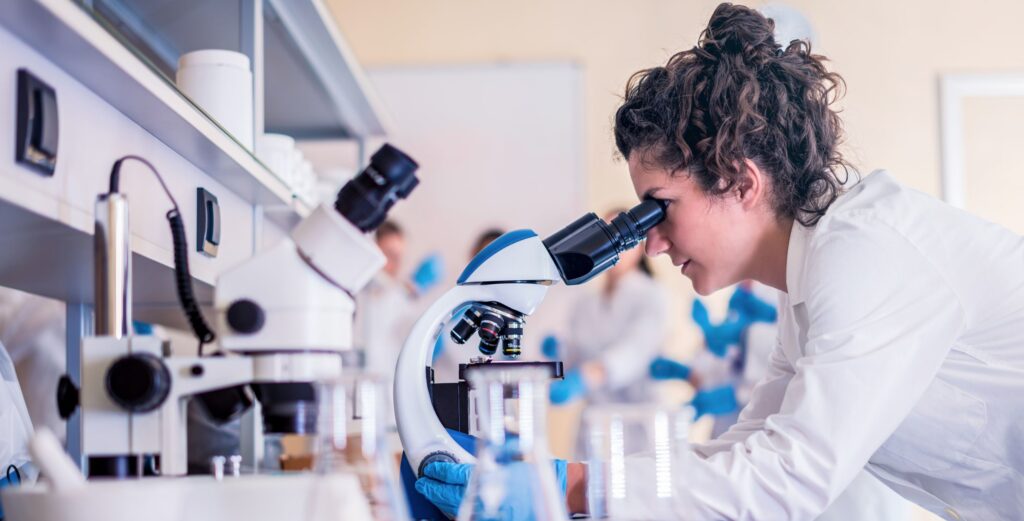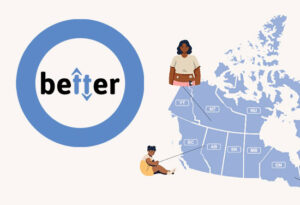
December 17, 2020
It’s been just over a year since the virus SARS-CoV-2, which causes the disease COVID-19, was identified.
The COVID-19 pandemic was declared in March 2020. As knowledge about the effects on people with type 1 diabetes (T1D) grew, we updated our information on a dedicated page and in numerous blogs. Unfortunately, most areas of Canada (with the exception of the Atlantic provinces) are deep into the second wave, and many communities are back in some form of modified lockdown.
However, there has recently been reason to have optimism as a number of COVID-19 vaccine candidates have been identified. The UK has already begun its vaccination program.
As of December 2020, Canada had sources more potential vaccine doses per capita than any other country in the world, and as of December 14, 2020, a selected few began to receive their inoculations, although most will be vaccinated in 2021.
As we head into the winter and the cold settles upon us, social opportunities that could take place outside will be limited – and many of us will again begin to feel the strain of isolation. Combine this with living with T1D and the everyday burden of maintaining healthy blood glucose levels, hydration and nutrition throughout the holiday season, when outdoor activities aren’t as accessible.
It’s a lot – and it’s understandable if COVID fatigue is starting to set in. Protecting yourself from the virus on top of everyday diabetes management is a lot to deal with.
Fortunately, we are now better equipped with knowledge of how the virus works and how to best protext ourselves from contracting it. And there is hope on the horizon.
What we know now
How it’s most likely transmitted
At the beginning of the pandemic, it wasn’t immediately clear how COVID-19 was spread, or how contagious the virus was. We didn’t know if was spread by ‘fomites’ (virus particles that remain on surfaces), droplets (from sneezing and coughing) or aerosols (meaning it spreads through the air and can be passed on by an infected person through talking or breathing).
We now know that fomites are not a likely source of virus spread – but that the virus itself is highly contagious and infectious. And that it can be spread via both droplets and aerosols.
Initial advice about protecting yourself and others still stands. Being diligent about frequent handwashing and trying not to touch your face remains true today. The best measures people can take are practicing hand and respiratory hygiene, physical distancing, wearing a face covering, sanitizing high touch surfaces and keeping social contacts limited.
Are people with T1D at greater risk of contracting the virus that causes COVID-19?
There is still no evidence that people with T1D are at any increased risk of being infected by SARS-CoV-2 than anyone else in the community. At the beginning of the pandemic, there may have been higher infection rates among the diabetes community as they had more healthcare contacts.
Are people with T1D at a greater risk if they do develop COVID-19?
People with T1D do not generally have a compromised immune system. However, they may be at higher risk of complications if they do become infected, especially if they are older or have other risk factors, such as kidney disease.
There is no new evidence to indicate that children or young adults with T1D are, on average, at increased risk of complications of COVID-19 if they develop the disease. However, as with any viral infection, blood glucose can be much more difficult to manage, meaning that extra glucose and ketone monitoring is advised for anyone with T1D who develops COVID-19.
Can COVID-19 cause T1D?
A small number of case reports have proposed that COVID-19 can cause diabetes in selected individuals. However, most larger studies do not support this finding. Thus, to date, there is no compelling evidence that COVID-19 can cause T1D. Some effects of the pandemic – such as changes in exposure to the usual, seasonal viruses due to public health restrictions and wearing masks – could potentially affect incidence rates of T1D in the future.
Are COVID-19 vaccines safe for people living with T1D?
The Pfizer and Moderna COVID-19 vaccines use new and cutting-edge technology – known as mRNA vaccines. This is different from other vaccines you get from your doctor, like the MMR or flu inoculation, most of which use an attenuated (or ‘weakened’) form of the virus to trigger an immune response in the body.
These new vaccines work by injecting genetic material called mRNA (messenger RNA) into the body. The mRNA carries instructions that direct the body make the “spike” protein found on the outer surface of the coronavirus (the red edges poking out the ball), and in turn generates a protective response against it – or to the coronavirus, if you should later be exposed to it.
The National Advisory Committee on Immunization (NACI) has issued preliminary guidance on waves of vaccine roll-out. Prioritized groups will include immunocompromised individuals and those with high-risk conditions. Every province and city will have different vaccine roll-out plans. It’s best to speak to speak to your healthcare provider about your specific community.
There is no information to date to suggest that the COVID-19 vaccine would not be safe for people with T1D, should they choose to receive it. Generally, people with diabetes have been prioritized for vaccines for infectious diseases, such as the flu.
This information should not be taken as medical advice. Every individual is different and will have unique healthcare needs. Speak to your primary care physician and endocrinologist to come up with the treatment plan that works best for you or your child with T1D.
What you can do now
Stick to the basics
The basics are still the best way to keep yourself and your family safe.
Try to find time for hobbies, books, movies and games that bring you joy and relaxation. Turning off devices and taking a break from news can also help. Filling your time with activities that bring you satisfaction and fulfillment can help ease some of boredom and isolation that may occur over the winter months.
How to get support
JDRF offers a series of virtual events and seminars to help foster connection to other members of the T1D community. Our Let’s Talk T1D Education and Connection series are held monthly to bring people together to discuss issues important to families living with T1D and provide the opportunity for social engagement. These series are meant to both educate and help ease potential loneliness and isolation. Both are offered in both English and French.
The COVID-19 pandemic has been a time of incredible emotional and physical strain. The burden has been even greater for those with T1D. But there is light at the end of the tunnel. With each day that passes, we get one day closer to our new normal.
If you don’t already, please follow us on our social media platforms, where we post tips and articles of interest and encourage you to engage and provide feedback.




